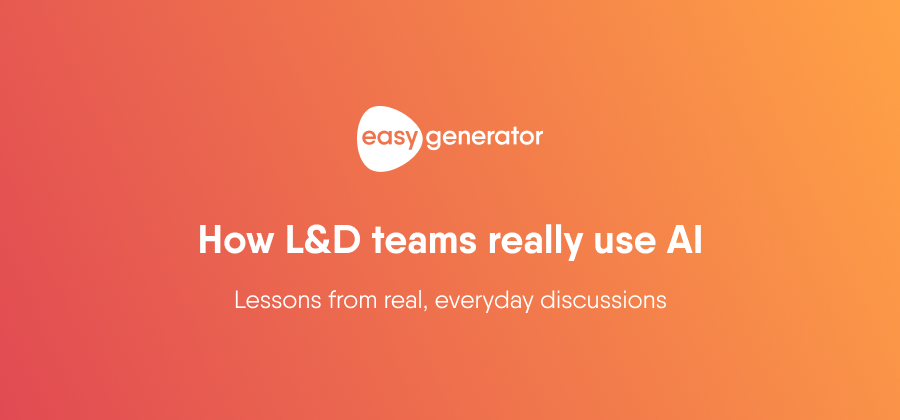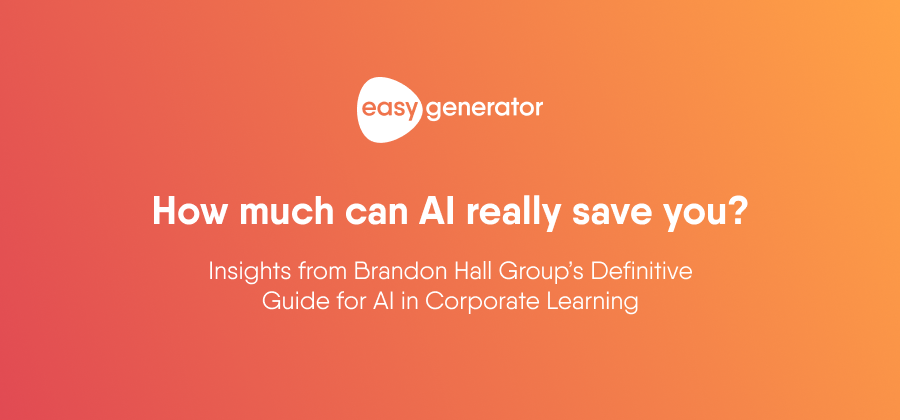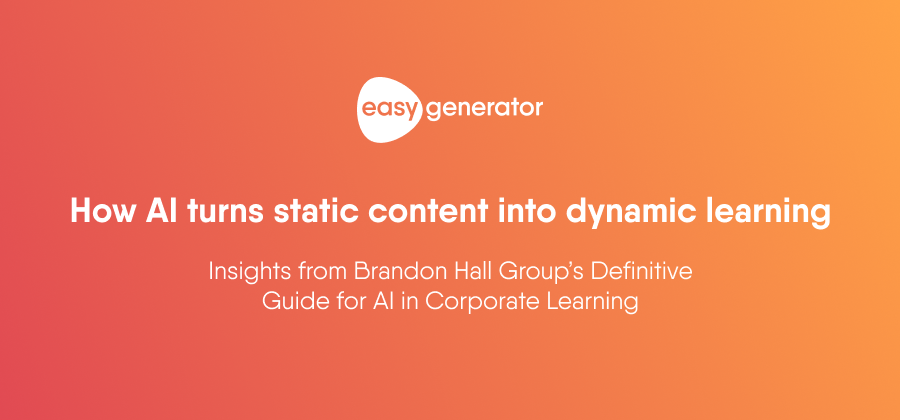How to create effective storyboards for e-learning (+ FREE template)
When creating e-learning, a storyboard is a great way to map your course out and visualize your learners’ experience. In this article, we’ll take a closer look at what storyboards are, how they add value, and we’ll help you get started with a free e-learning storyboard template.

What is an e-learning storyboard?
Storyboarding is a process traditionally used by filmmakers to plan stories out using a series of illustrations. They may have a plot for their film in mind but mapping out the various scenes and transitions helps ensure a smoother experience for the viewer.
In e-learning, storyboarding serves a similar purpose and is based on the principles of instructional design. Like for a film, an e-learning storyboard acts as a visual plan for the course you’re creating. It details everything from how many sections your course will contain to what types of graphics or interactive elements you’ll include, and where.
Why you should create a storyboard in e-learning
Now you know what e-learning storyboards are – but do you still need more convincing? Here are 3 ways e-learning storyboard will help you:
-
E-learning storyboards ensure your content is learner-centered
While you may know what subject your course will cover, mapping it out and determining what each section will look like can help envision a learner’s experience from start to finish. By considering what information your learners need and what types of content will be most engaging for them, you’ll ensure your course is designed with their best interests in mind.
-
Storyboards streamline your content creation process
Visualizing your course before jumping into creation mode allows you to identify the types of content and elements you’ll need in each section, like videos, images, or graphics. Rather than allowing these decisions to become an after-thought, you’ll enter the content creation process with a clear blueprint to spend your time efficiently.
-
E-learning storyboards help avoid costly changes later
While content updates are inevitable in a business, using an e-learning storyboard can help you avoid making costly changes to your content in the long run. Mapping your course out from the start will allow you to identify any design flaws or plot holes early on, which can prevent the need to make major changes down the line.
Choose the right authoring tool
Our experts created the ultimate guide to help you select an authoring tool that fits your organization’s needs.
Types of e-learning storyboards: Word and PowerPoint
You can create an e-learning storyboard in different types of documents, depending on your goals:
-
Create e-learning storyboards in Word
Microsoft Word is a common app for designing e-learning storyboards that are largely text-based. This is usually the case if you have lots of information to convey in your storyboard beyond visuals.
-
Create e-learning storyboards in PowerPoint
For a more visual e-learning storyboard, Microsoft PowerPoint does the job. Not only does PowerPoint come with many built-in tools for incorporating visual elements, but it also provides more space than a Word document to drag them around, allowing for a more flexible design.
Don’t want to start from scratch? We’ve put together the ultimate e-learning storyboard guide with downloadable templates to help you get started.
How to create a storyboard for e-learning
Regardless of the type of document you create, here are some tips for writing your e-learning storyboard:
1. Define your learning objectives
Like with any plan to create e-learning, define your learning objectives ahead of the creation process. Setting clear goals for what new knowledge or skills you want your learners to walk away with from each section of your course will help ensure you don’t include any irrelevant content.
2. Consider your learners’ needs
With clear learning objectives in mind, consider your learners’ backgrounds and learning needs to identify the best way to share knowledge with them. For example, if you’re designing a skills training program for sales professionals, consider how experienced your learners already are in sales. Taking their existing knowledge and skills into consideration allows you to design a more personalized experience that accounts for what information they do (and don’t) need.
3. Decide on learner assessments
Identifying how you will evaluate your learners’ progress is just as important as identifying what knowledge you want to share with them. For example, will there be a short exercise or quiz at the end of a course section? E-learning assessments not only give learners a chance to recap their new knowledge, but the insight into their progress also allows you to share more meaningful feedback. Assessments can also help measure how effective your learning content is.
4. Create your e-learning storyboard
Now that you’ve identified the learning objectives and have taken your learners’ needs into consideration, it’s time to write your e-learning storyboard. Briefly write out the basic idea for each section and emphasize the key points. Including too many details upfront can leave too little wiggle room for any changes or additions. It’s also important to plan the order of your content to ensure a meaningful flow.
5. Identify the multimedia elements you’ll include
Will you need a graphic to illustrate a concept somewhere in your course? Does a specific section need a video? Be sure to identify where in your e-learning content you’ll need multimedia elements so you can leave enough room for them.
Creating an e-learning storyboard may seem like a time-consuming activity, but with the tips above, you can set yourself up for a more efficient content creation process. Combined with an easy-to-use authoring tool, you’ll be able to speed up the content creation process even more.
A zero learning curve tool like Easygenerator comes with a drag-and-drop interface, allowing for a seamless creative process. At the same time, we provide in-app support services and personalized onboarding sessions to ensure anyone in your organization can share their knowledge in the form of engaging e-learning content, even if they aren’t trained in instructional design.
With a well-planned e-learning storyboard in hand, you’ll set yourself and your learners up for success from the start.


